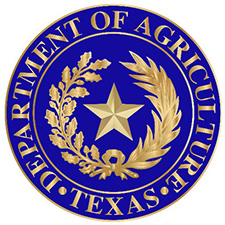(AGInsider) Congress could be even later than expected in completing the new farm bill, said two farm policy experts during a webinar on Tuesday, four days before the current law expires. House and Senate Agriculture Committee leaders are now aiming for passage of the 2023 farm bill by the end of December, but closed-door negotiations have moved slowly.
Congress rarely finishes a farm bill in one year, said associate professor Jonathan Coppess of the University of Illinois. Professor Joe Outlaw of Texas A&M said if an agreement is reached by February, before the presidential campaign begins in earnest, “I think they’ll do it.” If not, “I think we’re going to get a big long extension” of the 2018 farm law.
Leaders of the Senate and House Agriculture committees were at loggerheads over farm group demands for higher reference prices—the trigger for subsidy payments—and expansion of taxpayer-subsidized crop insurance with no new funding allotted for the farm bill. Also in dispute were SNAP eligibility rules, with House Republicans in particular wanting to slash food stamp spending, and whether $20 billion earmarked for climate mitigation in the 2022 climate, health, and tax law can be used for all types of USDA-funded land and water stewardship projects.
“That’s Sen. Boozman’s No. 1 priority in the farm bill, a meaningful increase in reference prices,” said economist John Newton, who works for Arkansas Sen. John Boozman, the senior Republican on the Senate Agriculture Committee. “Now is the time.”
A 10 percent increase in reference prices would cost more than $20 billion, and a 20 percent increase would be in “the $50-billion range,” said Outlaw. In comparison, the CBO projects commodity subsidies would cost $62 billion in the coming decade under current law.
The 2018 farm law included an escalator provision to automatically boost reference prices when there is a sustained rally in commodity prices. “Some of them this year are going to get nice increases,” said Outlaw. The effective reference price will rise for fewer than half of the 23 crops that are in the farm program, he said.
“I think we’re still working with CBO to get our scores,” said Newton when asked about the budgetary impact of higher reference prices. Steve Wallander, an economist for Democrats on the Senate Agriculture Committee, said higher reference prices had ripple effects in the farm bill so it was a complex task to estimate costs: “It all interacts.”
Farm bill prospects “are very much in doubt,” said Coppess, before listing potential road blocks. Among them, he said, “We don’t know if the House will go into a third round of this fight over SNAP.” Passage of the 2014 and 2018 farm bills was delayed by unsuccessful attempts by Republicans to cut SNAP funding and to curtail eligibility.
Democrats on the House Agriculture Committee oppose changes in SNAP in the wake of the debt agreement that made able-bodied adults ages 50-54 subject to a 90-day limit in food stamps if they do not work at least 80 hours a month, said Emily Pliscott, economist for Georgia Rep. David Scott, the senior Democrat on the committee. “This is a very hard line for Democrats.”
Leaders of both committees are interested in moving the $20 billion in climate funding into farm bill jurisdiction because it would “build baseline” and make conservation programs eligible for larger funding in the future. “I will not support taking those dollars and moving it into another title,” said Stabenow last week. Newton said Boozman believed the money could be used for “meeting the conservation and local resource concerns around the country…. We’re not talking about taking the [money] and using it for reference prices.”
To watch a video of the two-hour webinar, click here.











